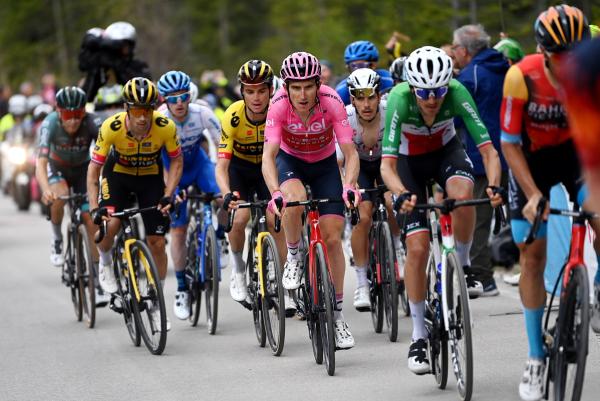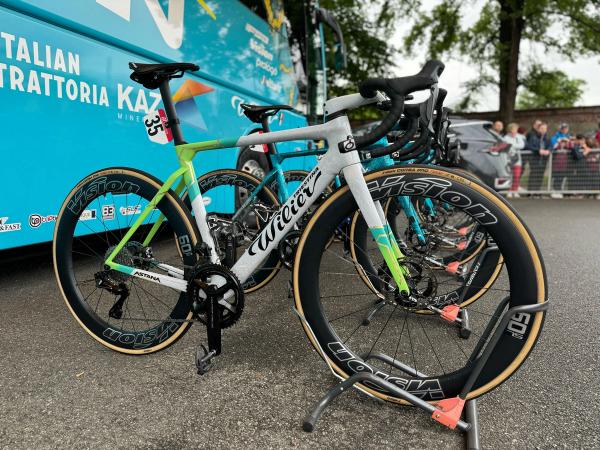Bike set-up at the Giro d’Italia: The end of slammed stems?
GCN’s Alex Paton scoured the WorldTour peloton to find out if pro riders are raising their handlebars to gain speed
Tom Hallam-Gravells
Online Production Editor
WorldTour bikes come in many different shapes and sizes (okay, most of them look the same) but there are certain characteristics that are uniform across the peloton, including the use of slammed stems.
A slammed set-up is characterised by a lack of spacers, meaning the stem sits in the lowest possible position. It helps a rider to get into the lowest, most aerodynamic position, although it’s also responsible for dodgy backs around the world among eager amateur cyclists who try to emulate the pros, only to realise they’ve over estimated their flexibility.
There’s good news for those who love to replicate pro bike set-ups, though, as GCN’s Alex Paton thinks he’s spotted a new trend in 2024, with many riders abandoning slammed set-ups in the favour of more spacers.
But is it actually a trend or a figment of his imagination? To find out, he made the trek over to Italy to the Giro d’Italia for a little investigation.
Read more: What are the latest bike tech trends that you should know about?
Why do pros use slammed set-ups?
Like most things in cycling, the root of slammed set-ups lies in the world of aerodynamics.
There are many forces working against a rider when they’re pedalling, but the biggest is drag, barring when they’re riding up a steep climb. Despite all the research and money that goes into improving the aerodynamics of bikes, it’s actually the rider that is the largest cause of drag and the WorldTour peloton’s solution has been a slammed set-up.
Generally speaking, the lower the front of the bike is, the lower and flatter a rider’s torso is, which is good for aerodynamics. It’s not a new concept and has been adopted by cyclists for decades.
Read more: How to get more speed for free: Top 5 aero tips that don't cost a fortune
However, a lower position also exposes more of the rider’s arms to the wind, and Alex believes some pros are remedying this by raising their handlebars. If the handlebars are raised and the torso remains in the same place by bending the arms to account for the change in height, then the forearm will be horizontal to the wind, helping to reduce drag.
Cycling is constantly evolving, with one of the biggest drivers of change being wind tunnels, where riders are constantly honing their positions on the bike in pursuit of any aerodynamic edge. It wouldn’t be surprising, then, if riders were adopting new aerodynamic positions, but was there any evidence of it at the Giro d’Italia? And if there was, could there be any other reasons for the use of more spacers, like boosting comfort?
Watch the full video at the top of this page to find out what Alex discovered during his hunt around the Giro peloton.
Keep up to date with the latest tech news, features and pro bikes on the GCN website






GT.jpg?w=600&auto=format)









.jpg?w=600&auto=format)



